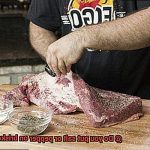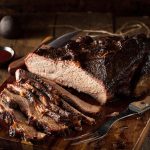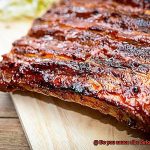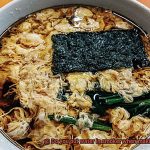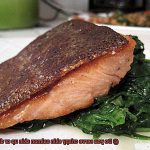Smoking food is a revered cooking technique that adds an unbeatable depth of flavor to your dishes. To achieve this, we use wood chips to infuse the meat or fish with a smoky essence that results in tender meat and subtle flavors. The process involves heating the wood chips and letting them smolder, creating an aromatic smoke that envelops the food, resulting in a lip-smacking taste that is simply out of this world. But for newbies, one question lingers – do you put the wood chips in the water in a smoker?
The answer to this age-old debate is both yes and no. Some folks prefer to soak their wood chips before placing them in the smoker, while others avoid soaking and place them directly in the smoker box without adding any water. Both methods have their advantages and disadvantages, so it’s essential to understand them thoroughly before deciding which works best for you.
In this blog post, we’ll explore the pros and cons of soaking or not soaking wood chips, what impact each method has on the smoking process, and which dishes come out great with each approach. So whether you’re a seasoned pro or just starting with smoking food at home, keep reading to discover everything you need to know about this hotly debated topic of wood chips in a smoker.
Contents
What is Smoking Meat?
Smoking meat is more than just a cooking technique – it’s an art form that has been used for centuries to add flavor and preserve meats. Unlike grilling or barbecuing, smoking meat is a low and slow process that infuses the meat with delicious smoky flavors over hours or even days.
To begin your smoking journey, you’ll need a smoker that fits your needs and budget. Electric smokers, charcoal smokers, and wood pellet smokers are all popular options on the market. Once you’ve selected your smoker, it’s time to choose the right wood chips. Different types of wood will give different flavors to the meat, so it’s important to select the right wood for your desired taste. Hickory, mesquite, apple, and cherry are all popular choices.
After selecting your wood chips, it’s time to prepare your smoker. Some smokers have a water pan or tray that helps regulate the temperature and adds moisture to the air, which is important for keeping the meat moist during smoking. Once your smoker is ready, light the wood chips and let the smoke envelop the meat.
But should you soak your wood chips in water before smoking them? This is a topic of much debate among smoking enthusiasts. Some believe it helps the chips last longer and produce more smoke, while others argue that wet wood chips can produce steam instead of smoke, resulting in less flavor being infused into the meat. Ultimately, the decision to soak or not soak is up to personal preference.
When smoking meat, patience is key. The low temperatures used in smoking mean that it can take hours or even days for larger cuts of meat to fully cook and take on the desired smoky flavor. But the end result is worth the wait – tender, juicy, and flavorful meat that will impress even the toughest of culinary critics.
Should You Soak Wood Chips in Water Before Smoking?
Then you know that selecting the right smoker and wood chips is crucial to achieving that tantalizing flavor. But, one question you may be pondering is whether or not to soak your wood chips in water before smoking them. As an expert on this topic, let me give you the lowdown on the pros and cons of soaking wood chips.
On one hand, some believe that soaking wood chips in water can prevent them from burning too quickly by slowly evaporating moisture that creates smoke instead of flames. Additionally, it’s thought to enhance the flavor of the smoke by introducing moisture into the cooking process. So, if you prefer a more controlled and subtle smoke, then soaking your wood chips might be the way to go.
On the other hand, some experts claim that soaking wood chips is unnecessary and can even have negative effects on the smoking process. For instance, soaked wood chips take longer to dry out, which can delay the smoking process and cause frustration for those who want their meat cooked quickly. Moreover, some argue that soaking wood chips can produce a less intense smoke flavor because the water dilutes the natural oils and resins in the wood.
Ultimately, whether or not you should soak your wood chips depends on personal preference and the type of smoker you’re using. For instance, some smokers require soaked wood chips to function properly, while others work better with dry wood. If you’re using a smoker with a water pan or other built-in moisture control method, you may not need to soak your wood chips at all. However, if you’re using a smaller smoker or grill without any moisture control, then soaking your wood chips may be necessary to prevent them from burning too quickly.
In conclusion, there’s no definitive answer when it comes to soaking wood chips for smoking. It’s all about experimenting with different methods and seeing what works best for you and your equipment. Remember, the key to great smoked meat is patience, practice, and a little bit of trial and error. So, try both methods and see which produces the best results for your taste buds. Happy smoking.
Pros of Soaking Wood Chips in Water Before Smoking
When it comes to smoking wood chips, there is a debate about soaking them in water before smoking. While some argue that it’s unnecessary, others swear by this technique. So, what are the pros of soaking wood chips in water before smoking?
Firstly, soaking the wood chips can help regulate the temperature of your smoker. When dry wood chips are added to the smoker, they can cause a sudden spike in temperature, which may lead to overcooking or uneven cooking. Soaking the chips in water slows down the heating process and helps to maintain a stable temperature, allowing for a more controlled and consistent smoking experience.
But that’s not all. Soaking wood chips can also enhance the flavor of the smoke. The water penetrates the pores of the wood, releasing more smoke and producing a stronger and more complex flavor. This is especially true when using hardwoods known for their bold and distinctive flavors like hickory or mesquite.
Another advantage of soaking wood chips is that it prevents them from burning too quickly. When dry chips are added to a hot smoker, they can ignite and burn up within minutes, creating an unpleasant taste and aroma. Soaking the chips helps to slow down the combustion process and produce a smoother and more flavorful smoke.
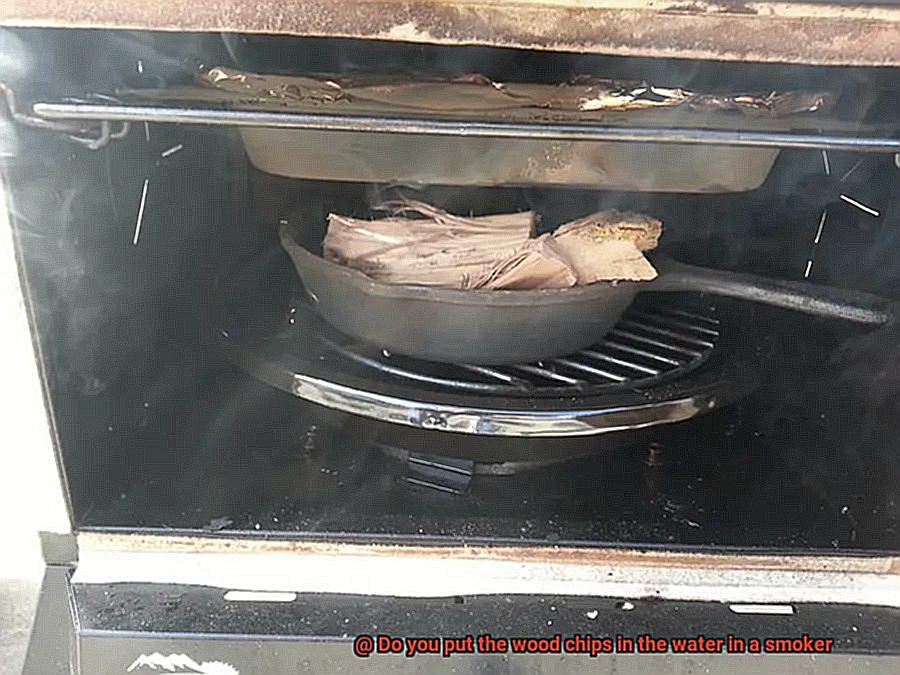
Additionally, soaking wood chips in water allows them to last longer during the smoking process. This means that you won’t have to add as many wood chips to your smoker, saving you time and effort.
Cons of Soaking Wood Chips in Water Before Smoking
You may have heard about the practice of soaking wood chips in water before smoking. While some believe that this technique can enhance the flavor and moisture of the meat, there are potential cons to consider.
One major drawback of soaking wood chips is inconsistent smoke production. Soaked chips take longer to ignite and produce smoke, which can result in uneven smoking and even flare-ups. This can be particularly problematic for beginners who may not be familiar with proper smoking techniques.
Another issue to keep in mind is how soaking affects smoker temperature. As wet wood chips begin to smoke and release moisture, steam is created that can interfere with temperature control. This makes it challenging to maintain a consistent cooking temperature, which is crucial for achieving perfectly smoked meats.
Additionally, soaking wood chips can lead to excess moisture in the food being smoked. While some people argue that this enhances flavor and juiciness, others believe that it can cause the meat to become soggy and lose its natural texture. This can be especially troublesome for meats like brisket or pork shoulder that require long smoking times and are prone to becoming overcooked or mushy.
How to Soak Wood Chips for Maximum Flavor
Smoking meat is an age-old practice that adds a distinct smoky flavor to any dish. Wood chips play a crucial role in this process, and soaking them before use can enhance the flavor of your meat. Here are five sub-sections that explain how to soak wood chips for maximum flavor when smoking meat.
Choose the Right Wood Chips
The type of wood chips you select can significantly impact the flavor of your meat. Different woods produce unique flavors, so it’s essential to choose one that complements your meat. For example, mesquite is ideal for beef, while applewood is perfect for pork. Take some time to research different woods and their flavors before making your selection.
Soak Wood Chips in Water
Soaking your wood chips before adding them to the smoker is a must. Fill a container with enough water to cover the wood chips fully. Using warm water helps the wood absorb the water more quickly. Let the chips soak for at least 30 minutes before use, but if you have the time, let them soak for several hours or even overnight.
Don’t Over-Soak Wood Chips
While soaking your wood chips is crucial, it’s equally important not to over-soak them. Over-soaking can cause the wood to become waterlogged and not produce enough smoke. As a general rule, 30 minutes to an hour of soaking time is sufficient for most types of wood chips.
Use Flavored Water
Adding flavors to the soaking water can elevate your meat’s taste profile. You can use beer, wine, or fruit juice instead of plain water to infuse additional flavors into the wood chips. The added flavors will eventually make their way into your meat, enhancing its taste.
Experiment with Different Woods and Soaking Times
No two meats are created equal, and neither are two sets of wood chips. To get the most out of your smoking experience, experiment with different woods and soaking times. Softer woods like fruitwood and alder burn quickly and may not need to be soaked. On the other hand, denser woods like hickory and oak benefit from soaking to regulate the smoker’s temperature.
Alternatives to Soaking Wood Chips in Water
Smoking meat is a beloved culinary practice, but soaking wood chips in water can be a tedious task that many smokers would rather do without. Luckily, there are several alternatives to soaking wood chips that can still deliver the same delicious smoky flavor.
For those who prefer a stronger, more intense smoke flavor, using dry wood chips is a great option. While this method may require more frequent feeding of the chips, it eliminates the need for soaking entirely. This means less prep time and more time to savor your perfectly smoked meats.
Another alternative is to use wood chunks instead of chips. These larger pieces of wood burn slowly and provide a consistent smoky flavor without needing to be soaked beforehand. Plus, they’re perfect for longer smoking sessions because they don’t require as much attention as smaller chips.
If you’re lucky enough to have a smoker with built-in trays or boxes for holding wood chips or chunks, you can eliminate soaking altogether. These trays or boxes are designed to hold dry wood and produce a steady stream of smoke throughout the cooking process. It’s a game-changer in terms of convenience.
Lastly, pellets are another hassle-free option that can save you time and effort. These compressed sawdust pieces come in uniform sizes and can be added directly to the smoker without any soaking or other preparation. They’re incredibly efficient and produce less ash than traditional wood chips.
Tips for Getting the Best Results from Your Smoker
Smoking meat is a culinary art that requires precision and patience. To achieve the perfect smoky flavor, every detail counts, and selecting the right wood chips is one of the most critical components.
Choosing the Right Wood Chips
Different types of wood chips will produce various flavors, making it essential to pick the right one for your dish. For instance, oak wood chips are perfect for smoking red meat, while maple wood chips are ideal for poultry and pork.
Soaking Your Wood Chips
One of the most debated topics in smoking is whether or not to soak your wood chips before adding them to your smoker. Soaking your wood chips in water can help prevent them from burning too quickly and producing a bitter taste. It can also help control the temperature inside the smoker.
However, it’s crucial not to soak them for too long. Thirty minutes to an hour should be sufficient time for them to absorb enough water without getting waterlogged and losing their smoky flavor.
Using Your Smoker
Once your wood chips are soaked and ready, it’s time to start smoking. Preheat your smoker to the desired temperature before adding your meat, ensuring that it cooks evenly. Throughout the smoking process, keep an eye on the temperature and adjust as necessary.
It’s also vital to add fresh wood chips gradually throughout the smoking process to maintain a consistent level of smoke. This will ensure that your meat receives enough smoky flavor without overpowering it.
Cleaning Your Smoker
After you’re done smoking, make sure to clean your smoker thoroughly to prevent any bacteria from growing and maintain its longevity. A clean smoker will also ensure that your food retains its natural flavors.
UBv5ex1zBlY” >
Conclusion
In conclusion, smoking food is an age-old cooking technique that transforms ordinary dishes into extraordinary culinary creations. Wood chips are the secret ingredient that adds a smoky flavor and aroma to your meat, fish, or vegetables. However, the question of whether to soak wood chips in water before smoking remains a contentious issue among BBQ enthusiasts.
While some swear by soaking their wood chips for hours to enhance the flavor and moisture of their meat, others argue that it’s unnecessary and can even hinder the smoking process. Ultimately, the choice to soak or not soak your wood chips depends on personal preference and the type of smoker you’re using.
To get the best results from your smoker, it’s essential to follow a few tips.
First, choose the right wood chips for your dish as different woods produce unique flavors. Second, preheat your smoker to the desired temperature before adding your meat for even cooking.
Third, gradually add fresh wood chips throughout the smoking process to maintain a consistent level of smoke without overpowering your food. And lastly, clean your smoker thoroughly after use to prevent bacteria growth and ensure its longevity.


